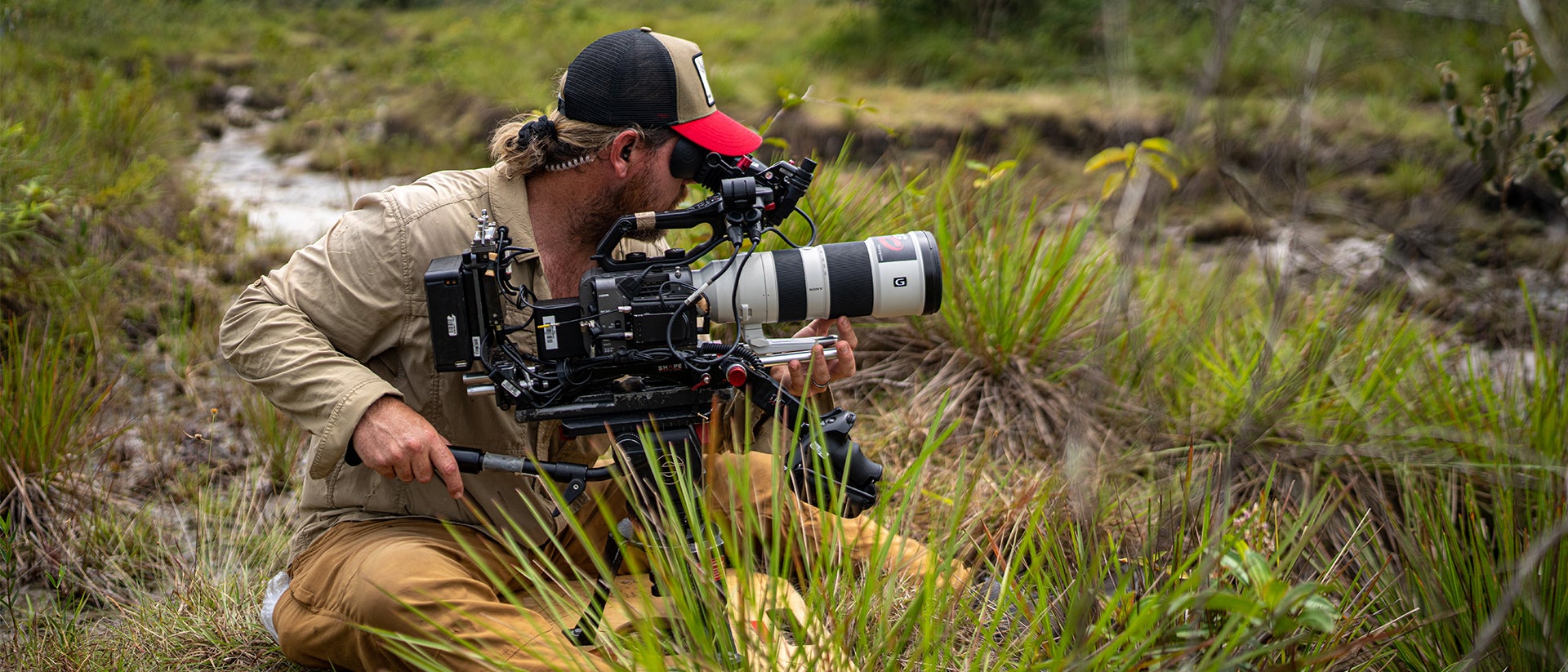
12-18-2023 - Case Study
DP Patrick Dupree on the Sony FX6 and the new look for "Naked and Afraid"
By: Oakley Anderson-Moore
Few cinematographers have had to hack it in as many wild places as Patrick Dupree. That comes with the territory as a longtime director of photography on a survival show like Naked and Afraid.
The premise of the show goes like this: one man and one woman, who meet for the first time in the nude, are paired and tasked with surviving in some of the world's most harsh environments for 21 days with no food, water, or clothing. It sounds extreme – and it is – as the cast has to hike miles through jungle and bush on the hot, rocky sand without the luxury of shoes or clothing.
Luckily, the crew keeps their digs, and have bush camps for gear and the semblance of security. But they also live in the wild with the cast, slogging through the mud and brush, trying to capture the story as it unfolds.
It's wild to think of doing this once -- but Dupree has done this across countries for the better part of ten years. Dupree sat down with Sony Cine to talk about shooting Naked and Afraid and the big switch to the Sony FX6 this season.
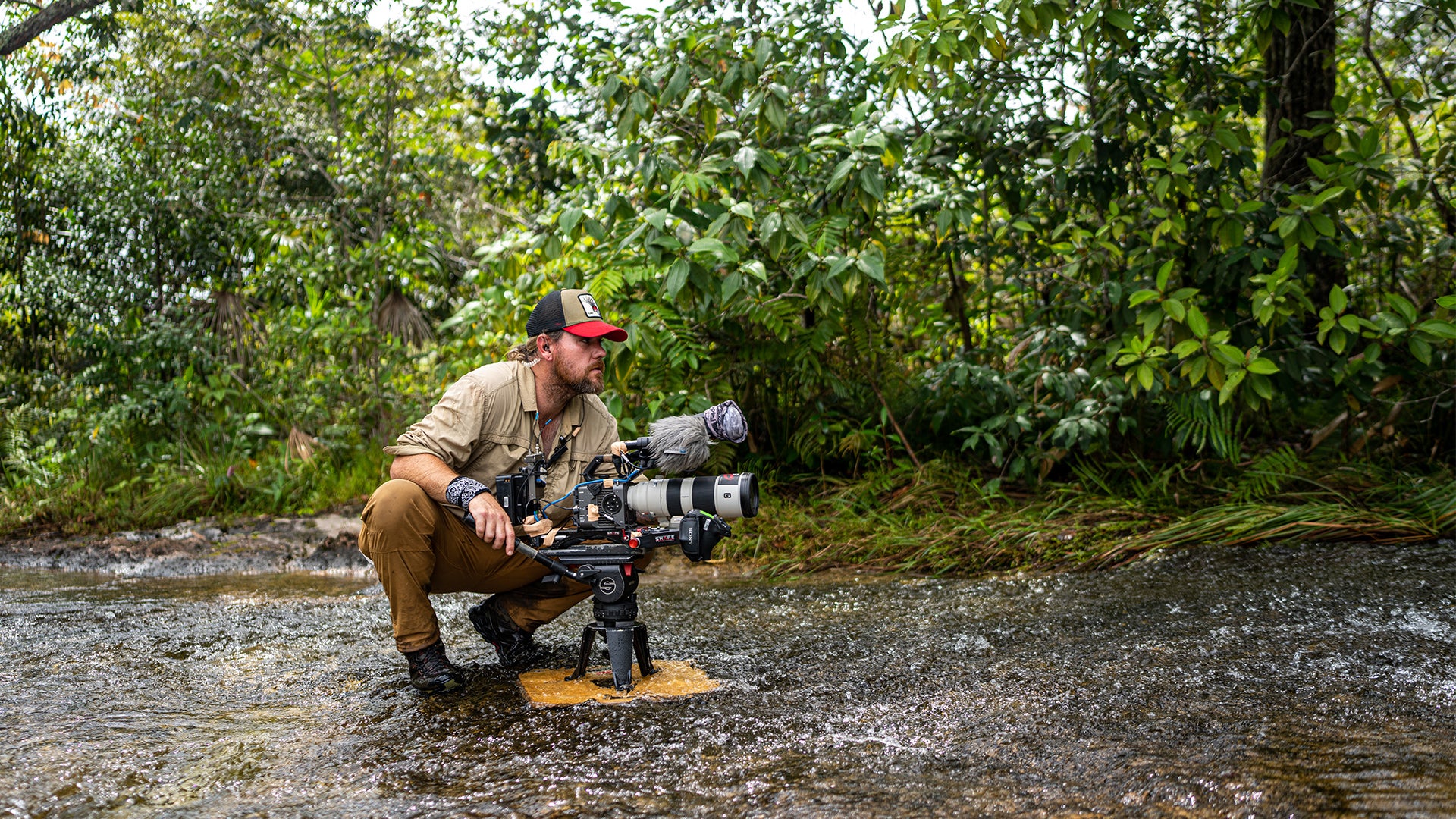
How Dupree first learned the craft from wilderness cinematographers
Fresh out of school with an audio engineering degree, Dupree found there were no jobs to be found in his field. So, he took on a temporary gig transcribing footage for a production company. Dupree first caught glimpses of DPs on that footage. When he asked how he could move into that world, a producer put him in the field as a PA.
"From there, I just started learning the gear, asking the right questions, and having a good attitude," explains Dupree. "I didn't go to film school, so everything was just learning as I went and as people would teach me."
Dupree started as a production assistant and worked hard to make his way up to Assistant Camera. He credits his success to having mentors. One of his mentors, Glenn Evans, did the Jeff Corwin Experience for 20 years. "If there's an animal out there, Glenn has filmed it, held it, and then went back and filmed it again," laughs Dupree. When Evans got a call from the Naked and Afraid team, he recommended Dupree for the job.
"He told them, 'If you're looking for somebody young and hungry, I have this AC and he wants to go.'"
Dupree got an interview, and the Executive Producer, Steve Rankin was there. Like all real show fans, he knew that in the first episode of the season, Rankin gets bit by a Fer-de-Lance, one of the deadliest snakes in the world, and almost lost his foot.
"As they're interviewing me for the job, I told them I grew up in Florida. I like the outdoors. I like the adventure. They asked, 'Are you aware of what can happen to you out here?' And I remember just leaning over and looking down at his foot for a second, pausing, and then just being like, 'Yeah, I've heard the stories.' They laughed, and the next week, I was shipping out to film for five episodes in a row."

Caption: Detailed shot from the Sony FX6 showing the conditions the contestants live in
Why Dupree switched Naked and Afraid to the Sony FX6
After almost nine years and thirteen seasons with the show, Dupree has a tight relationship with his team.
"That's probably one of my favorite aspects about working on this show and having such a small crew: we all depend on each other, have each other's backs, and always have our eyes open. "
As a docu-follow show, Naked and Afraid has a production manager, producer, DP, AC, audio operator, and recently, an associate producer who works with local fixers to find a great location to throw their survivalists into. And that means that from South America's jungles to Africa's plains, Dupree and his team have to be ready for anything.
"The story can change in a second," says Dupree. "The shooting environment changes in a second from bright sun to thunderstorms and pouring rain. It's very creative if you want it to be."
While the team knows exactly how to get things done, there was one thing that Dupree wanted to change: the camera.
"Here comes my long tangent that the rest of my DP crews, ACs, and producers have been hearing me say for long enough," jokes Dupree. "One of the biggest things I wanted with the FX6 was the full-frame sensor. With Naked and Afraid, we have so much contrast. We're outside in outdoor environments. We go from the extreme heat on rocks to caves and shelters with awnings where one cast member's trying to stay in the shade, one's out in the sun, and you're trying to film a conversation between both of them."
In the past, Naked and Afraid used cameras with smaller sensors, which allowed the use of a broadcast-style lens with longer focal lengths.
"But after 16 seasons in 10 years, we felt like it was time to change, evolve and adapt," says Dupree. "I knew introducing the full-frame sensor would give us that clarity, that sharpness to our image that could really show people what our cast actually go through. It's one thing to tell somebody she had a thousand bites on her. It's another thing for me to show you that she literally has 10,000 bug bites on her, and her eyelids are swollen shut.
We have a saying on Naked and Afraid, and it's 'embrace the suck' because it's going to be bad. And now with the FX6's full-frame sensor, we can show it properly. The FX6's dynamic range allows us to show the layer of filth underneath the fingernail. We can show the festering bug bites and the pus. It helps people at home feel more, and that leads to better storytelling."
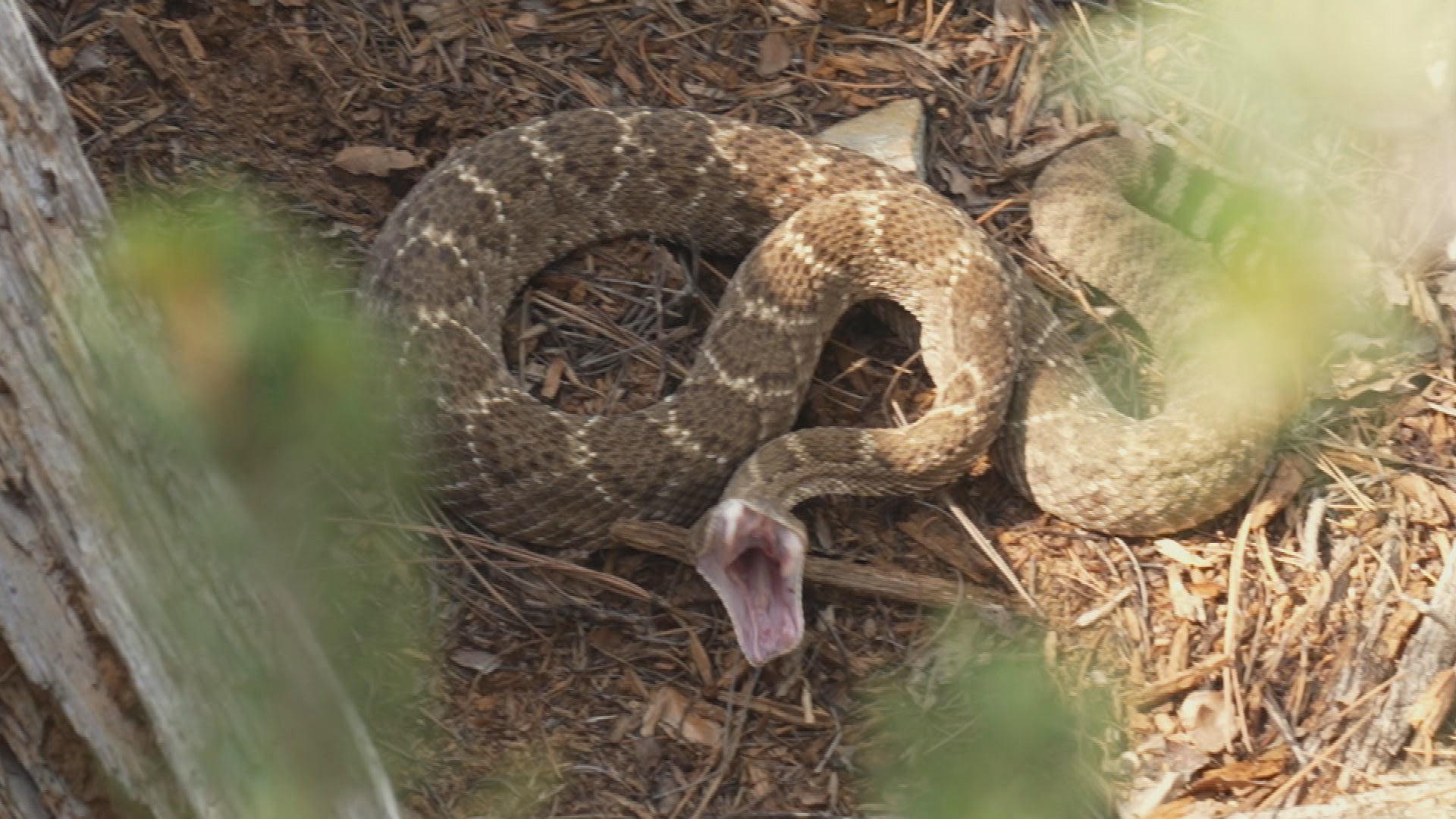
Caption: A scene captured by the Sony FX6 showing a rattlesnake hiding in the shadows
How Naked and Afraid tested the FX6
Change can be scary. Luckily for Dupree, the Executive Producers had been with him since the beginning, and after a few long months of relentlessly extolling the benefits of the FX6, they let him test it out on set.
"They didn't want to send me far because if this messed up, they needed to get some gear sent to me," jokes Dupree. "So, they sent me to New Mexico.”
It was the first time the show had two non-Americans, Lily and Sam, in the American landscape. On the blistering hot first day, the cast saw a rattlesnake and decided to go after it. With the FX6 in hand, Dupree jumped into action. ¨
¨And myself, not always thinking, I jumped up on a log and got the rattlesnake beneath me. You can actually see my foot in the footage as the snake is striking at us!¨
That moment ended up becoming the opener for the whole season. Dupree got an email from a network executive about how great the opening looked -- and that should become the show's new look. Dupree's test episode during season 16 was a success! For season 17, the full frame FX6 was prepped for all crews to use for the entire season.
""The producers are thinking about story," says Dupree. "They're not really focusing on what the cameraperson thinks is beautiful. Once I could show them a difference, they were hooked."
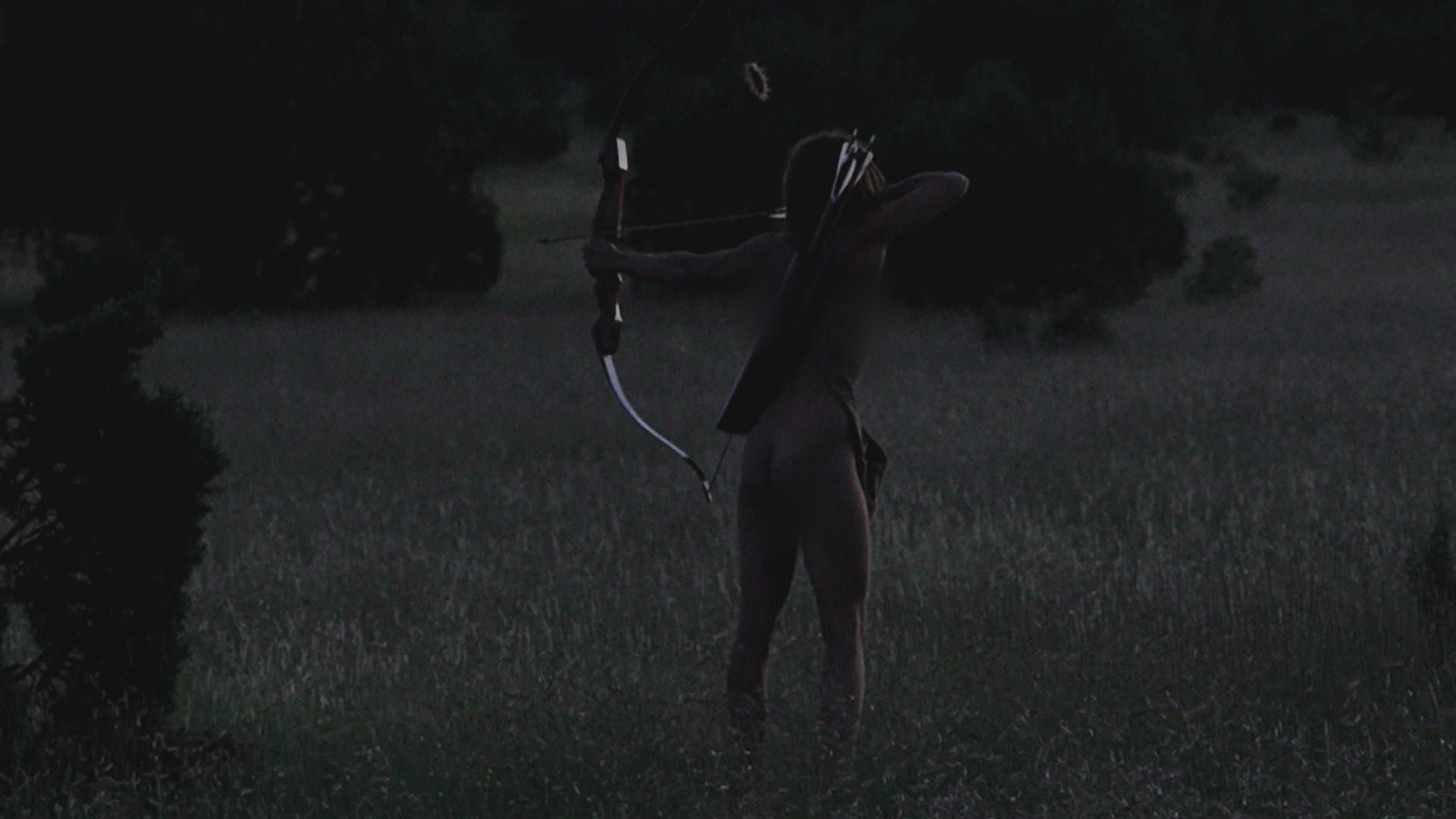
Caption: A low light shot captures a contestant hunting in the dark
How the FX6 let Dupree stylize Naked and Afraid while being ready for anything
Dupree got to fully dive in with the FX6 on season 17. Anything can happen at any time, and so the versatility of the camera was what he needed to get coverage while getting creative.
For example, his dedicated lens would be the Sony PZ 28-135 f/4. Perfectly wide in Full Frame mode at the 28mm end, it could become even longer with the crop factor in Super 35 mode. For the OTFs [on-the-fly interviews], Dupree experimented with something else, the Sony 85mm 1.4 from G master series lens.
¨Things happen, snakes fall out of trees,¨ says Dupree about why it would normally be too risky to use a prime lens on this kind of set.
But with the option to switch to Super 35 mode or the reliable digital zoom, Dupree could get a textured, cinematic look for OTFs and still be able to catch anything dramatic that might suddenly present itself midshot.
Dupree rigged out the FX6 to have anything he needed to access as assignable buttons. He's a big fan of having a button for S&Q mode, so he can switch shutter speeds for something artistic, like a cast member chopping wood, in between reality.
"That was one of the goals for the new season of Naked and Afraid, to have more stylized content mixed in with the raw reality," explains Dupree.
As for exposure, the dual ISO on the FX6 allowed Dupree to show things never before seen on the show. Specifically, night scenes. Dupree rarely shot at night for the show -- both for safety and the reality of low-light. That footage was usually left to IR cameras or not captured at all. But that changed with the FX6.
"Cranking the ISO, I went past 12,800. I wanted to test it all," describes Dupree about the first time they filmed a hunting scene in Africa at night. "I wanted to put the camera through the ringer. I did bring it down to somewhere between 128,000 and 240,000. It was a full moon, but it was incredible because the image was still clear. It was grainy, but that worked for our show. It looked like it was supposed to look. I don't want to give too much away, it hasn't aired yet, but we were able to watch our hunter with his bow and arrow sit against a tree with the moon up and an animal approaching him. We've never been able to do that before."
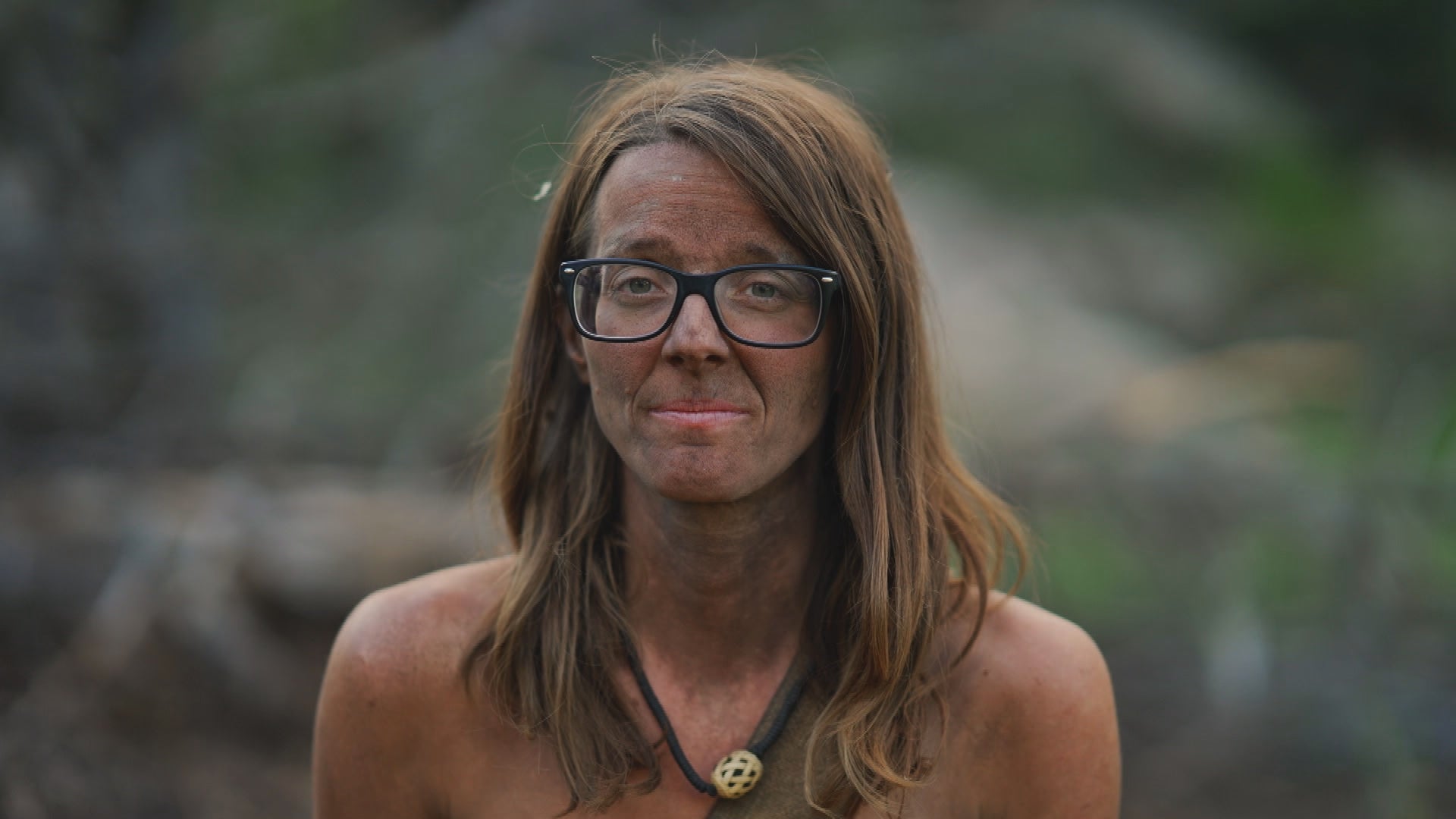
Caption: An example of the shallow depth of field from the FX6
Why automatic is no longer a dirty word
According to Dupree, the key to autofocus is knowing when to use it to expand your creativity.
"It is a TV show, and we mostly use manual focus," says Dupree. "But for stylized shooting, for doing rack focuses on the fly, being able to tap the screen and control the speed in which it rack focuses has led to more stylized shots. I feel like not many cinematographers will admit that they like to put things onto auto. In testing the camera out, the auto functions I found to be incredible. The autofocus on the eyeball is so impressive, and when we're shooting the OTFs, [the cast] like to sway. And a camera operator doesn't want to be sitting there trying to chase focus the whole time. Being able just to touch the screen, lock it onto the eyeball, and just know that the autofocus is going to keep them in focus for those moments is crucial."
This thinking also applies to the Auto ND feature.
"A lot of times, you'll have a conversation happen and one person will be out in the sun and one is in the shade – and you're panning between them both," explains Dupree. "Sometimes it's pivotal information, sometimes it's not. Being able to put the auto ND on and pan and let the camera adjust for you as you go allows for more cinematic moves. We're no longer having to pan and zoom to get the proper framing, and also roll your thumb to get the iris ring to compensate, and get the right exposure and focus. Now we can just worry about getting nice, smooth moves."
How the Post team reacted to the FX6 change
For post-production on a tight deadline, changing cameras can be rough. Not so with Naked and Afraid. One of the biggest benefits of the switch? Color.
"To me, the big thing was Cinetone," says Dupree. "We don't have time to really grade these, so we don't shoot in Log. Cinematographers want to work with the Sony VENICE, it's such a beautiful camera. And to know that we can take that color tone with Sony cinetone and bake it into our look, and know that it's going to work."
The DPs on the show know that with S-Cinetone, they can now shoot great looks across Nicaragua,Trinidad, Namibia, or South Africa. "It gives a beautiful, realistic, saturated true look to the show. Post has really been excited about that."

Caption: An example of how Dupree had to tell stories with contestants in bright light and contrasty environments
How shooting Naked and Afraid teaches Dupree to respect life and death
Dupree admits there are nights at the end of a long day when he lays in bed, wondering if he really has to go out and do it all again tomorrow. In the end, it's perspective that keeps him coming back.
"You never beat nature," contemplates Dupree. "You just escape in some situations. It's important to be mindful and not be destructive of the environments we're filming in. You stop for a second, and every little inch, something is alive fighting for life and death. As humans, we just expect tomorrow to happen. But in these environments, I learned nothing is promised to you. You have to stay vigilant, aware, humble, grateful, appreciative of the crew around us, the cast members that are sacrificing their health, their life potentially, to do this show. And most importantly, respect the environment as part of the universe. It's really the biggest lesson that we've learned to get through it."
Check out the latest episode that's aired from Season 16 of Naked and Afraid to see Dupree and his team's work with the FX6 on on Prime Video or Discovery Plus.




